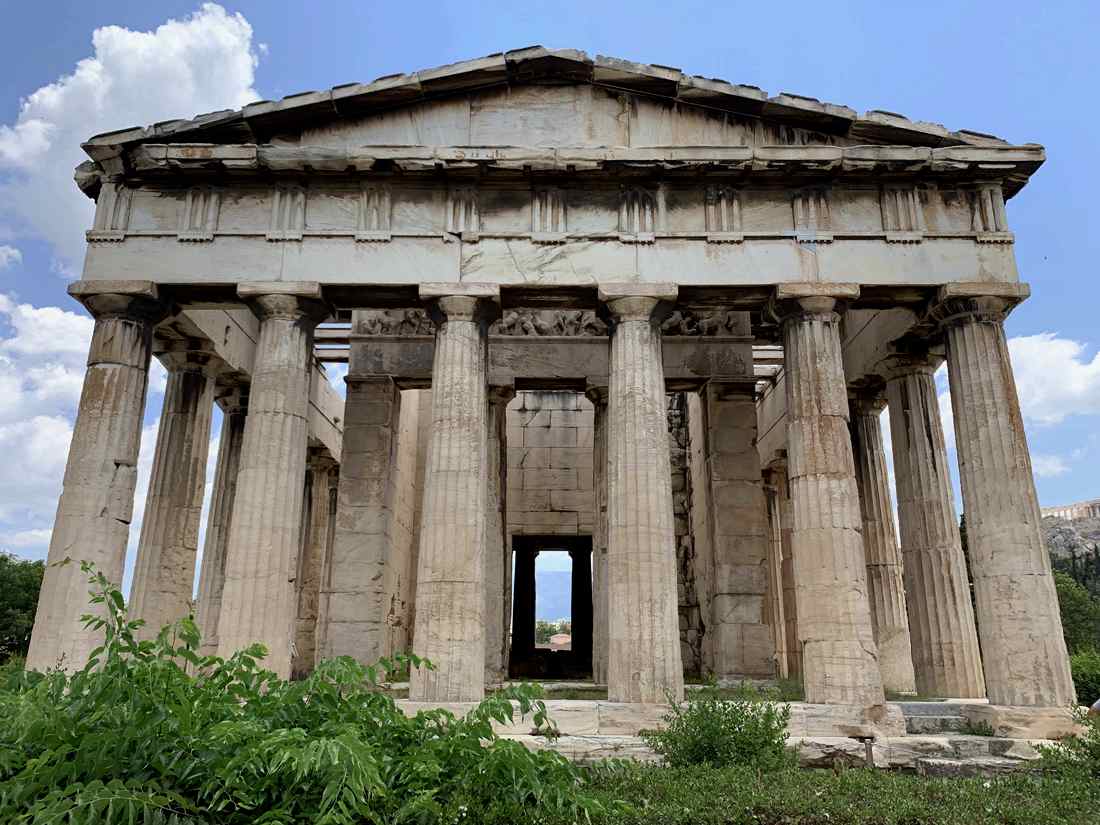
Temple of Hephaestus
The Temple of Hephaestus is also known as Theseion and is one of the best preserved ancient Greek temples dedicated to the god of fire Hephaestus and the goddess of wisdom Athena. It is located within the Ancient Agora in Athens, in an area that was named “Theseus” because of an old hypothesis linking the temple to the name of Theseus. Although this version was later revised, the name has been retained. The Temple of Hephaestus is open to the public, as it is part of the archaeological area of the Ancient Agora. It is one of the best preserved monuments of the Agora and the most prominent Doric temple in Greece. Construction began in 449 B.C. and judging by the characteristics of the temple, the architect was influenced by the Parthenon on the Acropolis, which was being built at the same time. The great similarities with the Parthenon are the two-colored Doric colonnade located inside the building and the Ionic zoophore decorating the upper part of the portico. The name of the architect remains unknown, but there is speculation that he was strongly influenced by Ictinus and Skopas. He is also thought to be the possible author of the magnificent temples at Sunion, of Nemesis at Ramnunta, and of Ares at Acharnae. The temple was built on the hill of Agorayon Kolonos, and its surroundings were decorated with clay pots of flowers and shrubs, while inside were two bronze statues of Hephaestus and Athena. With the advent of Christianity in Greece and until 1834, the temple was used as an Orthodox church, and in the 7th century it was transformed into the Church of St. George of Akamas. The building subsequently became an archaeological museum and functioned until the 1930s, when the American School of Classical Studies began excavations at the Agora.
Guest reviews
You may also be interested in similar information
Fabulous Cafe Little Kook
Athens, Greece
Technopolis
Athens, Greece
Wolf Hill in Athens
Athens, Greece
Limanakia Beach
Athens, Greece
Parnitha cable car
Athens, Greece
Arch of Hadrian
Athens, Greece
Nymfoliptos cave
Athens, Greece
Abandoned railway station
Athens, Greece














